New Ceratopsian from New Mexico
A new species of chasmosaurine horned dinosaur has been described based on a nearly complete skull found in the vicinity of Alamo Mesa in the Bisti/De-na-zin Federal Wilderness Area (New Mexico). The dinosaur has been named Bisticeratops froeseorum and its discovery lends weight to the hypothesis that there was a thriving dinosaur and vertebrate fauna in north-western New Mexico towards the end of the Cretaceous (Campanian stage).
A New Ceratopsian Dinosaur
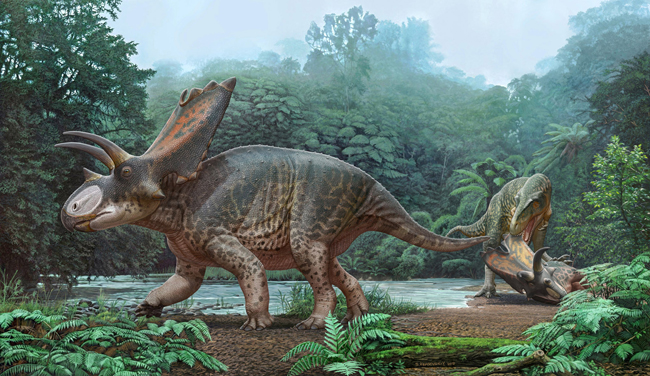
Furthermore, the formal scientific description of Bisticeratops froeseorum adds to the growing record of chasmosaurine ceratopsids in the south-western USA and provides new information about the taxonomic diversity of ceratopsids.
Farmington Member (Kirtland Formation)
A nearly complete fossilised skull was discovered in 1975 by a field party from the University of Arizona.
The skull (specimen number NMMNH P-50000) and the holotype for Bisticeratops froeseorum exhibits a combination of character states that clearly differentiate it from the closely related Pentaceratops sternbergi and other chasmosaurines.
The fossil material was recovered from strata associated with the Farmington Member of the upper Kirtland Formation. Dinosaur fossils from the Farmington Member are rare and the biota poorly known. However, the discovery of Bisticeratops results in a substantial increase in the stratigraphic and paleogeographic range of the Chasmosaurinae in the Western Interior Basin of North America.
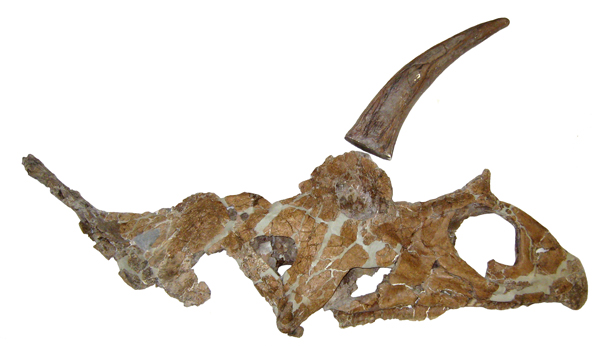
Bisticeratops froeseorum A New Ceratopsian Species
Based on the skull material and a comparative analysis using more complete fossils from related members of the Chasmosaurinae, the latest member of the diverse ceratopsid biota associated with Laramidia is estimated to have measured around seven metres in length, with brow horns over a metre long.
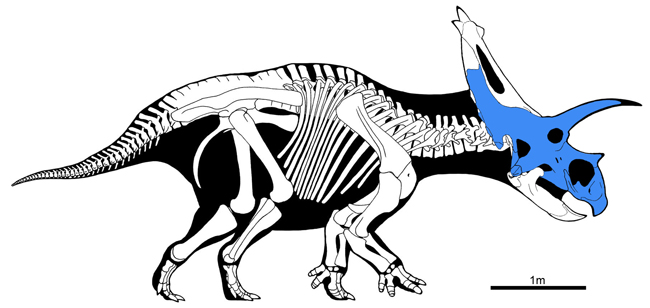
The Evolutionary Development of the Chasmosaurinae in Southern Laramidia
Writing in the “New Mexico Museum of Natural History and Science Bulletin”, the researchers conclude that in southern Laramidia during the Late Campanian, the Dinosauria were thriving and the biota was experiencing a high faunal turnover with lots of new species evolving.
The formal scientific description of Bisticeratops froeseorum adds to the growing record of chasmosaurine ceratopsids known from the south-western United States and provides new information about the diversity of these horned dinosaurs during the Late Cretaceous.
Two years ago, Everything Dinosaur wrote a blog post about two newly described chasmosaurines from New Mexico (Fowler and Freeman Fowler, 2020). The two newly named horned dinosaurs Terminocavus sealeyi and Navajoceratops sullivani along with other chasmosaurine specimens from the Farmington and De-na-zin Members of the Kirtland Formation (Taxon C), form a sequence of horned dinosaur evolution, stretching over five million years from Utahceratops to Pentaceratops and on to Anchiceratops.
To read Everything Dinosaur’s earlier blog post about T. sealeyi and N. sullivani: Transitional Ceratopsids Knitting Together Horned Dinosaurs.
Roaming Laramidia
Bisticeratops roamed the southern region of the North American landmass known as Laramidia approximately 74 million years ago. If the sandstones and siltstones of the Farmington Member were deposited around 74 million years ago, this suggests that Bisticeratops is approximately 2 million years younger than Pentaceratops sternbergi and Titanoceratops ouranos
Furthermore, Bisticeratops is younger by 1 million years than the recently named Navajoceratops sullivani and 750,000 years younger than Terminocavus sealeyi. Additionally, Bisticeratops is nearly 500,000 years older than the De-na-zin Member (uppermost Kirtland Formation) unnamed chasmosaurines NMMNH P-21100 and NMMNH P-41228. It is also noted that Bisticeratops occurs approximately 1 million years before Sierraceratops turneri.
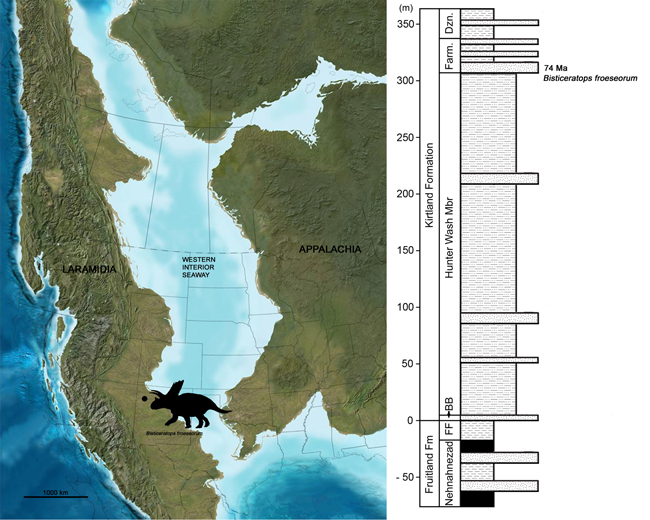
Bisticeratops froeseorum – What’s in a Name
The genus name references the Bisti/De-na-zin Wilderness Area, the area from which the specimen came; whilst “ceratops” is from the Greek for “horned face”.
The species name “froeseorum” honours the late Edgar Froese the founder and leader of the instrumental music band Tangerine Dream and his son Jerome Froese the former member of Tangerine Dream.
Tangerine Dream is a German instrumental/electronic music band founded in 1967 by Edgar Froese. The group has seen many personnel changes over the years, with Edgar Froese having been the only constant member until his death in 2015. The best-known line-up of the group was in mid 1970s consisting of Edgar Froese, Christopher Franke, and Peter Baumann, then in 1979, Johannes Schmoelling replaced Baumann, and after 5 years Paul Haslinger replaced Schmoelling.
In 1986 the Tangerine Dream trio consisting of Edgar Froese, Christopher Franke, and Paul Haslinger performed in Albuquerque, New Mexico. The concert took place at Kiva Auditorium in downtown Albuquerque.
Senior author of the scientific paper Sebastian Dalman (New Mexico Museum of Natural History) wrote in an email to Everything Dinosaur:
“According to various reports, New Mexico was a favourite place of Tangerine Dream members and every time they toured U.S. they liked to stop by in New Mexico. Today, Tangerine Dream after the passing of Edgar Froese, continues with new members including Thorsten Quaeschning, Hoshiko Yamane, and Paul Frick. I always wanted to honour the band with my scientific work, which their music inspired over the years.”
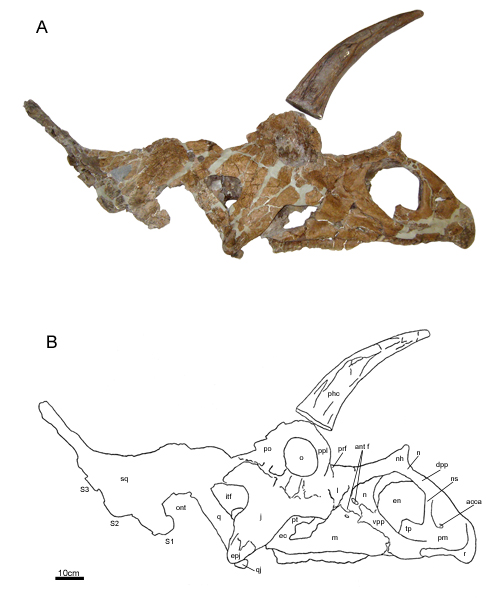
Our thanks to Tangerine Dream fan Sebastian for his assistance in the compilation of this article.
The scientific paper: “A new chasmosaurine ceratopsid from the Upper Cretaceous (Campanian) Farmington Member of the Kirtland Formation, New Mexico” by Sebastian G. Dalman, Steven E. Jasinski and Spencer G. Lucas published in the New Mexico Museum of Natural History and Science Bulletin.

